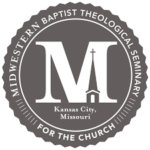When Jesus fulfills the Old Testament Law and Prophets, he is actualizing what Scripture anticipated and achieving what God promised and predicted (Matt. 5:17; 11:13; Luke 16:16; 24:44). Truly every promise in Scripture is “Yes” in Christ (2 Cor. 1:20), and in him God secures every blessing for believers (Gal. 3:14; Eph. 1:3).
Yet Jesus fulfills the Old Testament’s promises in more than one way, and this means Christians cannot approach Old Testament promises all in the same manner. Believers must claim Scripture’s promises using a salvation-historical framework that has Jesus at the center. Christ is the lens that clarifies and focuses the lasting significance of all God’s promises for us.
With a firm grasp of the progress of salvation history, this accessible guide helps Christians interpret the Old Testament, see how it testifies to Jesus, believe that Jesus secured every divine promise, and understand how Moses’s law still matters.
1. Christ maintains some Old Testament promises with no extension.
Christ maintains certain promises without extending them to further beneficiaries. Many of these are explicit restoration promises that include a vision of a global salvation after Israel’s exile. Consider, for example, Daniel’s prediction: “And many of those who sleep in the dust of the earth shall awake, some to everlasting life, and some to shame and everlasting contempt” (Dan. 12:2). Alluding to this passage, Jesus associated this same resurrection with his second coming: “An hour is coming when all who are in the tombs will hear [the Son of Man’s] voice and come out, those who have done good to the resurrection of life, and those who have done evil to the resurrection of judgment” (John 5:28–29; cf. John 11:11, 25; 1 Cor. 15:51–52).
Jesus noted that the Old Testament indicates that the Messiah’s resurrection would precede and generate our own: “Thus it is written that the Christ should suffer and on the third day rise from the dead, and that repentance and forgiveness of sins should be proclaimed in his name to all nations, beginning from Jerusalem” (Luke 24:46–47; cf. 1 Cor 15:3–5).1
The resurrection from the dead and eternal judgment are two of “the elementary doctrine[s] of Christ” (Heb. 6:1–2). Christians should claim the promise of resurrection in Daniel 12:2 as our own. We do so, however, recognizing that we will only rise because Christ was first raised. “Christ has been raised from the dead, the firstfruits of those who have fallen asleep. . . . Christ the firstfruits, then at his coming those who belong to Christ” (1 Cor. 15:20, 23). As Jesus said, “I am the resurrection and the life. Whoever believes in me, though he die, yet shall he live” (John 11:25; cf. Rom. 6:5). This resurrection has an already-but-not-yet dimension, as the redeemed saints from both the Old and New Testament epochs benefit from it. Jesus maintains the Old Testament promise without altering those profiting from it.
2. Christ maintains some Old Testament promises with extension.
When Christ fulfills some Old Testament promises, he extends the promise to all parties related to him. For example, consider how the Messiah’s promised mission gets extended to the church. Isaiah portrayed the coming royal deliverer as speaking in first person and declaring that Yahweh called him from the womb, named him “Israel,” and told him that his mission as God’s servant was to save some from the people of Israel and the rest of the nations:
It is too light a thing that you should be my servant
to raise up the tribes of Jacob
and to bring back the preserved of Israel;
I will make you as a light for the nations,
that my salvation may reach to the end of the earth. (Isa. 49:6 cf. Isa. 49:1, 3)2
By this act God would fulfill his earlier promises to Abraham (Gen. 12:3; 22:18; cf. Isa. 51:1–4; 54:1–3).
Paul saw Jesus as the most immediate referent to Isaiah’s servant-person, for he said he was “saying nothing but what the prophets and Moses said would come to pass: that the Christ must suffer and that, by being the first to rise from the dead, he would proclaim light both to our people and to the Gentiles” (Acts 26:22–23). Yet Paul also saw the Old Testament promises reaching further to the mission of all who are in Christ:
We are turning to the Gentiles. For so the Lord has commanded us, saying,
“I have made you a light for the Gentiles,
that you may bring salvation to the ends of the earth.” (Acts 13:46–47)
A promise related to the messianic servant’s work has now become a commission for all the servants identified with him.
3. Christ himself completes or uniquely realizes some Old Testament promises.
Some Old Testament promises Christ has already completed or uniquely realized. Such fulfillments prove that God will certainly keep the rest of his promises (Deut. 18:22; Ezek. 33:33; cf. Rom. 8:32). For example, the prophet Micah predicted that a long-prophesied ruler in Israel would rise from Bethlehem (Mic. 5:2), and Christ exclusively fulfilled that promise at his birth (Matt. 2:6). There is only one Christ, and he was born only once. Nevertheless, his birth was to spark a global return of “his brothers,” and as King he would “shepherd his flock in the strength of the Lord,” thus establishing lasting security and peace and enjoying a great name (Mic. 5:3–5). All these added promises continue to give Christians comfort and hope, and Christ’s birth in Bethlehem validates for us the certainty of his permanent and global exaltation.
Another example is Yahweh’s promise to Solomon that, because he asked for wisdom rather than long life, riches, or punishment on his enemies, God would give him wisdom, as well as riches and honor (1 Kings 3:11–13). This promise was “yes” in Christ in that on the cross Jesus purchased every divine bestowal of kindness, forbearance, and patience experienced in the realm of common grace (Gen. 8:20–21; Rom. 2:4; 3:25–26).
Nevertheless, because the promise was contingent on one man’s request and included blessing related to one man’s specific reign, the promise’s specificity indicates that this is not a promise that every believer always enjoys. Unlike Yahweh’s promise to never leave nor forsake Joshua (Deut. 31:8; Josh. 1:5), which was true for all who followed him (Deut. 31:6), this promise was unique to Solomon himself, with others benefiting only from the wisdom, riches, and honor he himself enjoyed.
4. Christ transforms some Old Testament promises.
At times, Jesus transforms or develops the makeup and audience of an Old Testament promise. These promises relate most directly to shadows that clarify and point to a greater substance in Christ—that is, to Old Testament patterns or types that find their climax or antitype in Jesus.3 The land that Yahweh promised to Abraham and his offspring as a lasting possession is of this kind (cf. Gen. 13:15; 17:8; 48:4; Ex. 32:13). The patriarch would serve as a father of a single nation who would dwell in the land of Canaan (Gen. 17:8) and oversee an even broader geopolitical sphere (Gen. 15:18). These realities are initially fulfilled in the Mosaic covenant (Ex. 2:24; 6:8; Deut. 1:8; 6:10; 9:5; 30:20; 34:4) and realized in the days of Joshua (Josh. 11:23; 21:43) and Solomon (1 Kings 4:20–21). Nevertheless, Genesis already foresees Abraham becoming the father of not just one nation but nations (Gen. 17:4–6) and anticipates his influence reaching beyond the land (singular) to lands (plural) (Gen. 26:3–4; cf. Gen. 15:18; Gen. 17:8). This would happen when the singular, royal offspring rose to possess the gate of his enemies and when, in him, all the earth’s nations counted themselves blessed (Gen. 22:17–18; 24:60; cf. Ps. 2:7). Paul cites the Genesis lands promise (Gen. 26:3) and its allusion (Gen. 22:17–18; cf. Gen. 13:15; Gen. 17:8; Gen. 24:7; Gen. 28:4) when he identifies Christ as the offspring to whom the promises were made (Gal. 3:16). The apostle then declares that all in Christ, whether Jew or Gentile, slave or free, male or female, “are Abraham’s seed and heirs according to the promise” (Gal. 3:28–29). Paul also stresses that the Christian’s inheritance (Gal. 3:18) was not the present Jerusalem associated with the Mosaic covenant but was instead the heavenly Jerusalem (Gal. 4:24–26), which both Isaiah and John associate with the new earth (Isa. 65:17–25; Rev. 21:1–22:5; cf. Heb. 12:22).4
In the new covenant, Christ transforms the type into the antitype by fulfilling the original land promise in himself and by extending it to the whole world through his people. In Paul’s words, God promised “Abraham and his offspring that he would be heir of the world” (Rom. 4:13); at the consummation the new earth will fully realize the antitype. By extending the promised land to lands, Jesus transforms Israel’s “everlasting possession” (Gen. 17:8; 48:4), realizing what God had already foretold to the patriarchs.
Conclusion
God’s promises are often associated with life or death and conditioned on whether his covenant partner obeys. Whereas the old Mosaic covenant was conditional and revocable (and thus temporarily considered Israel’s disobedience), the Abrahamic covenant was conditional and irrevocable. This means that God would indeed realize all the promises but would do so only through an obedient Son (cf. Gen. 12:3; 18:18–19; 22:17–18). Representing Abraham and Israel, Jesus actively obeyed and secured Old Testament promises for all who are in him. Christ maintains some promises without extension, maintains others with extension, completes some, and transforms others.
Isaiah declares that throughout the ages no ear has heard nor eye has seen a God like ours “who acts for those who wait for him” (Isa. 64:4). The call of the biblical text, therefore, is that we would trust in the promises of God. Just before Paul asserts that “all the promises of God find their Yes in [Christ]” (2 Cor. 1:20), he declares, “God is faithful” (2 Cor. 1:18). As the psalmist declares,
The Lord is faithful in all his words
and kind in all his works. (Ps. 145:13; cf. 2 Thess. 3:3; 2 Tim. 2:11–13;
1 Pet. 4:19; 1 John 1:9)
One day, God will complete all his promises to us in Christ. And we will say in that day,
Behold, this is our God; we have waited for him, that he might save us.
This is the Lord; we have waited for him;
let us be glad and rejoice in his salvation. (Isa. 25:9)
Notes:
- For more on the Old Testament predictions of Christ’s third-day resurrection, see Mitchell Lloyd Chase, “Resurrection Hope in Daniel 12:2: An Exercise in Biblical Theology” (PhD diss., The Southern Baptist Theological Seminary, 2013); Mitchell L. Chase, “The Genesis of Resurrection Hope: Exploring Its Early Presence and Deep Roots,” JETS 57, no. 3 (2014): 467–80; Mitchell L. Chase, “ ‘From Dust You Shall Arise’: Resurrection Hope in the Old Testament,” SBJT 18, no. 4 (2014): 9–29; Nicholas P. Lunn, “ ‘Raised on the Third Day according to the Scriptures’: Resurrection Typology in the Genesis Creation Narrative,” JETS 57, no. 3 (2014): 523–35; Stephen G. Dempster, “From Slight Peg to Cornerstone to Capstone: The Resurrection of Christ on ‘the Third Day’ according to the Scriptures,” WTJ 76, no. 2 (2014): 371–409; Joel R. White, “ ‘He Was Raised on the Third Day According to the Scriptures’ (1 Corinthians 15:4): A Typological Interpretation Based on the Cultic Calendar in Leviticus 23,” TynBul 66, no. 1 (2015): 103–19; Jason S. DeRouchie, “Why the Third Day? The Promise of Resurrection in All of Scripture,” Midwestern Journal of Theology 20, no. 1 (2021): 19–34.
- Within Isa. 40–53, the term “servant” occurs twenty times, always in the singular. Sometimes it refers to God’s sinful “servant-people” (e.g., Isa. 42:19, 22; 43:8, 10), but within the Servant Songs it always refers to the eschatological Messiah, God’s “servant-person” (Isa. 42:1–9; 49:1–13; 50:4–11; 52:13–53:12). For arguments that the servant of Isaiah’s Servant Songs is the promised messianic deliverer, see G. P. Hugenberger, “The Servant of the Lord in the ‘Servant Songs’ of Isaiah: A Second Moses Figure,” in The Lord’s Anointed: Interpretation of Old Testament Messianic Texts, ed. Philip E. Satterthwaite, Richard S. Hess, and Gordon J. Wenham (Grand Rapids, MI: Baker Academic, 1995), 108–11; Walter C. Kaiser Jr., “The Identity and Mission of the ‘Servant of the Lord,’ ” in The Gospel According to Isaiah 53: Encountering the Suffering Servant in Jewish and Christian Theology, ed. Darrell L. Bock and Mitch Glaser (Grand Rapids, MI: Kregel Academic, 2012), 89–92; Jason S. DeRouchie, “Redemptive-Historical, Christocentric Approach,” in Five Views of Christ in the Old Testament, ed. Andrew M. King and Brian J. Tabb, Counterpoints: Bible and Theology (Grand Rapids, MI: Zondervan Academic, 2022), 208–9. For a specific argument that the servant in Isa. 49:1–6 refers to the eschatological Messiah, see G. K. Beale, A New Testament Biblical Theology: The Unfolding of the Old Testament in the New (Grand Rapids, MI: Baker Academic, 2011), 656–57.
- For an exceptional overview of typology and transformation as argued for here, see Brent E. Parker, “The Israel-Christ-Church Relationship,” in Progressive Covenantalism: Charting a Course between Dispensational and Covenant Theologies, ed. Stephen J. Wellum and Brent E. Parker (Nashville: B&H Academic, 2016), 39–68.
- Paul’s explicit language of “inheritance” in Gal. 3:18 is most likely rooted in the Old Testament land promise (e.g., Num. 26:53–56; Josh. 11:23). So Thomas R. Schreiner, Galatians, ZECNT (Grand Rapids, MI: Zondervan, 2010), 230; cf. Ronald Y. K. Fung, The Epistle to the Galatians, NICNT (Grand Rapids, MI: Eerdmans, 1988), 155. Cf. Num. 18:20; 32:18–19; 33:54; 34:2; Deut. 4:21, 38; 12:9; 15:4; 19:14; 20:16; 24:4; 25:19; 26:1; Josh. 13:6–8; 24:28.
This article is adapted from Delighting in the Old Testament: Through Christ and for Christ by Jason S. DeRouchie. It originally appeared at Crossway.org.







